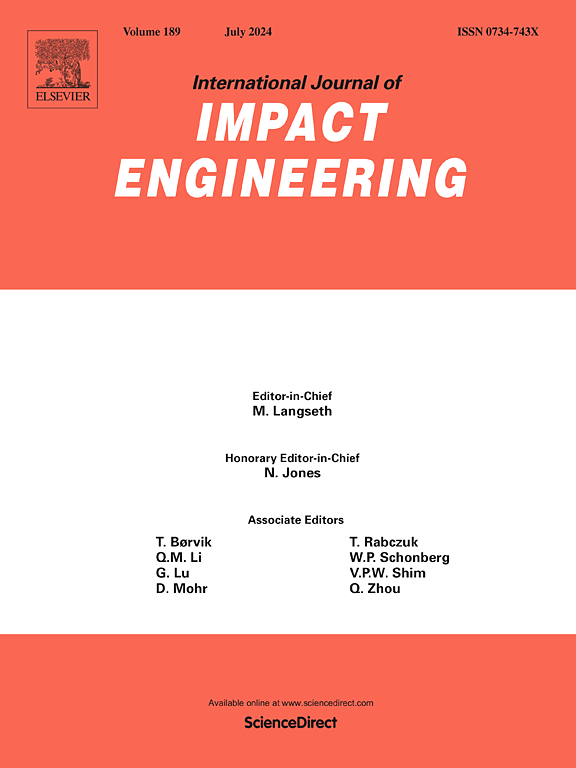The viscoelastic stress wave propagation model based on fractional derivative constitutive
IF 5.1
2区 工程技术
Q1 ENGINEERING, MECHANICAL
International Journal of Impact Engineering
Pub Date : 2025-03-23
DOI:10.1016/j.ijimpeng.2025.105330
引用次数: 0
Abstract
The study of stress wave propagation in viscoelastic bars is important for the dynamic mechanical property testing of low-impedance materials. For the propagation of stress waves in viscoelastic bars, it is significant to consider the lateral inertia effects and viscous effects on wave propagation. This paper establishes a viscoelastic stress wave propagation model based on fractional derivative constitutive. The analytical solution of the viscoelastic wave equation based on the fractional derivative constitutive model is obtained. The model employs fractional derivative viscoelastic constitutive relations instead of traditional standard mechanical viscoelastic models and is capable of describing the lateral inertia effects and viscoelastic effects on stress wave propagation. While the Poisson's ratio is zero, the model simplifies to a viscoelastic stress wave propagation model that does not account for lateral inertia effects. In this paper, the material parameters of polymethylmethacrylate (PMMA) are obtained by Dynamic Mechanical Analysis (DMA) test, and the attenuation coefficient and phase velocity change with frequency are calculated by this model.
基于分数阶导数本构的粘弹性应力波传播模型
应力波在粘弹性杆中的传播研究对低阻抗材料的动态力学性能测试具有重要意义。对于应力波在粘弹性杆中的传播,考虑侧向惯性效应和粘滞效应对波的传播具有重要意义。建立了基于分数阶导数本构的粘弹性应力波传播模型。给出了基于分数阶导数本构模型的粘弹性波动方程的解析解。该模型采用分数阶导数粘弹性本构关系代替传统的标准力学粘弹性模型,能够描述侧向惯性效应和粘弹性效应对应力波传播的影响。当泊松比为零时,该模型简化为不考虑侧向惯性效应的粘弹性应力波传播模型。本文通过动态力学分析(DMA)试验获得了聚甲基丙烯酸甲酯(PMMA)的材料参数,并利用该模型计算了衰减系数和相速度随频率的变化。
本文章由计算机程序翻译,如有差异,请以英文原文为准。
求助全文
约1分钟内获得全文
求助全文
来源期刊

International Journal of Impact Engineering
工程技术-工程:机械
CiteScore
8.70
自引率
13.70%
发文量
241
审稿时长
52 days
期刊介绍:
The International Journal of Impact Engineering, established in 1983 publishes original research findings related to the response of structures, components and materials subjected to impact, blast and high-rate loading. Areas relevant to the journal encompass the following general topics and those associated with them:
-Behaviour and failure of structures and materials under impact and blast loading
-Systems for protection and absorption of impact and blast loading
-Terminal ballistics
-Dynamic behaviour and failure of materials including plasticity and fracture
-Stress waves
-Structural crashworthiness
-High-rate mechanical and forming processes
-Impact, blast and high-rate loading/measurement techniques and their applications
 求助内容:
求助内容: 应助结果提醒方式:
应助结果提醒方式:


